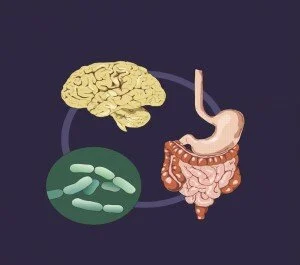Memory erasing is a hot topic in Hollywood. From the 1997 sci-fi flick Men in Black to the 2004 romantic comedy Eternal Sunshine of a Spotless Mind, characters are constantly trying to erase painful or dangerous memories from their minds. While neuroscientists are currently aiming their memory-erasing efforts at clinical conditions such as post traumatic stress disorder, they are making progress that may one day allow you to erase any memory you desire.
Memory formation essentially works like this:
- Sensory information (wind on your face, the smell of coffee, a Picasso painting) is encoded as electrical pulses called action potentials.
- Action potentials cause glutamate, an important neurotransmitter, to exit one nerve cell (neuron), cross a small channel of space called a synapse, and bind to receptors on the next neuron, which chemically activates the next cell to transmit the impulse and glutamate-release along the chain of neurons.

- Ultimately, this signal reaches the areas of the brain responsible for encoding memory: the amygdala, and the hippocampus.
- When the amygdala and the hippocampus are simultaneously activated by glutamate and an electrical pulse, that particular “community” of neurons is changed to become more sensitive to each other. In this way, a memory is formed.
Because memory is created by experience, we are sometimes stuck remembering experiences we’d rather forget. This is especially true for PTSD patients, whose traumatic experience causes significant neurological patterns to take root and, often times, disrupt their lives. To try and help these individuals, some scientists have begun to investigate ways to actually erase memories from our brains.
During his research on memory formation, Joe Tsien of the Medical College of Georgia found that the enzyme CaMKII plays a significant role in memory consolidation. However, in experiments with mice, Tsien found that if he increased CaMKII above a normal limit while the mouse was remembering an experience, the connections between the neurons suddenly weakened and the memory would vanish. This effect happens within a few minutes, and it is permanent and selective: the memory being recalled is erased, while all other memories are left intact. 1
Meanwhile, researchers at UCLA targeted the enzyme kinase M in their memory research. Using Aplysia—a type of marine slug, they first gave the slug a memory: a shock to its tail. For as long as a week after the initial shock, the slug would still retract its tail for a full 30 seconds when touched on the same spot, proving that it had formed a memory. Next, the researchers injected the slug with zeta inhibitory peptide, which blocked the activity of kinase M. When the slugs were prodded again twenty-four hours later, they flinched for only a moment before relaxing—the same reaction they showed when they were poked before the shock. 2 State University of New York professor Todd Sacktor has demonstrated similar results with rats. 3
The bottom line is that scientists are moving step-by-step toward being able to target memories in the brain and erase them. The closer we get to achieving this goal, however, the more closely we will have to examine the ethical implications, lest we end up with scenarios like those in Paycheck (2003) or Total Recall (1990)….
| Resources from Wiley on This Topic |

|
Rebuilding Shattered Lives: Treating Complex PTSD and Dissociative Disorders, 2nd Edition
by James A. Chu
|

|
Handbook of Neural Engineering
by Metin Akay
|

|
Enzyme Technologies: Metagenomics, Evolution, Biocatalysis and Biosynthesis
by Wu-Kuang Yeh, Hsiu-Chiung Yang, James R. McCarthy
|
1. Wang, H., Feng, R., Wang, L., Li, F., Cao, X., & Tsien, J. (2008). CaMKII Activation State Underlies Synaptic Labile Phase of LTP and Short-Term Memory Formation Current Biology, 18 (20), 1546-1554 DOI: 10.1016/j.cub.2008.08.064
2. Cai D, Pearce K, Chen S, & Glanzman DL (2011). Protein kinase m maintains long-term sensitization and long-term facilitation in aplysia. The Journal of neuroscience : the official journal of the Society for Neuroscience, 31 (17), 6421-31 PMID: 21525283
3. Shema, R., Sacktor, T., & Dudai, Y. (2007). Rapid Erasure of Long-Term Memory Associations in the Cortex by an Inhibitor of PKM Science, 317 (5840), 951-953 DOI: 10.1126/science.1144334
 The research, led by Professor Mark Lyte from Texas Tech University Health Sciences Center,
The research, led by Professor Mark Lyte from Texas Tech University Health Sciences Center,


